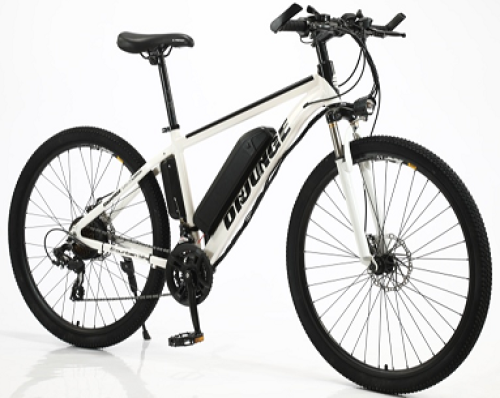

A bicycle, often simply referred to as a bike, is a human-powered vehicle with two wheels attached to a frame. Bicycles have been a popular and efficient mode of transportation and recreation for decades. Here are key features and components of a bicycle: Frame: The frame is the main structure of the bicycle, usually made of metal (aluminum, steel, titanium, or carbon fiber). It supports and connects all the other components. Wheels and Tires: Bicycles have two wheels, each with a tire mounted on it. Tires can vary in size, tread pattern, and type (road, mountain, hybrid). Handlebars: The handlebars are the horizontal bars attached to the stem at the front of the bicycle. They provide the rider with a grip for steering. Saddle (Seat): The saddle is the seat of the bicycle, providing a comfortable and supportive surface for the rider. Pedals: Pedals are attached to the crank arms and provide a surface for the rider to push against to propel the bicycle forward. Crankset and Chainring: The crankset consists of one or more chainrings, which are toothed discs attached to the crank arms. The pedals are connected to the crankset via the crank arms. Chain: The chain connects the chainring(s) to the rear cassette, transferring power from the pedals to the rear wheel. Gears and Derailleurs: Bicycles may have multiple gears, controlled by derailleurs. Gears allow the rider to adjust the resistance and speed by changing the size of the chainring and rear cassette. Brakes: Bicycles are equipped with brakes to slow down or stop. Common types include rim brakes (caliper or cantilever) and disc brakes. Suspension (on some models): Mountain bikes and some hybrid bikes may feature suspension systems (front suspension forks or full suspension) to absorb shocks from uneven terrain. Shifters: Shifters control the changing of gears. They can be integrated into the brake levers or positioned separately on the handlebars. Headset and Fork: The headset connects the front fork to the frame, allowing for steering. The fork includes the front suspension (if present) and holds the front wheel. Hub and Axle: The hub is the central component of the wheel, and the axle runs through it. Quick-release mechanisms or thru-axles secure the wheels to the frame. Kickstand: Some bicycles have a kickstand, a small metal rod that extends from the frame to support the bike when stationary. Fenders and Racks (on some models): Fenders help protect the rider from water and mud, and racks provide a platform for carrying cargo. Bicycles come in various types, including road bikes, mountain bikes, hybrid bikes, and more. They are used for commuting, exercise, recreation, and various competitive sports. The design and features of a bicycle can vary based on its intended use and the preferences of the rider.